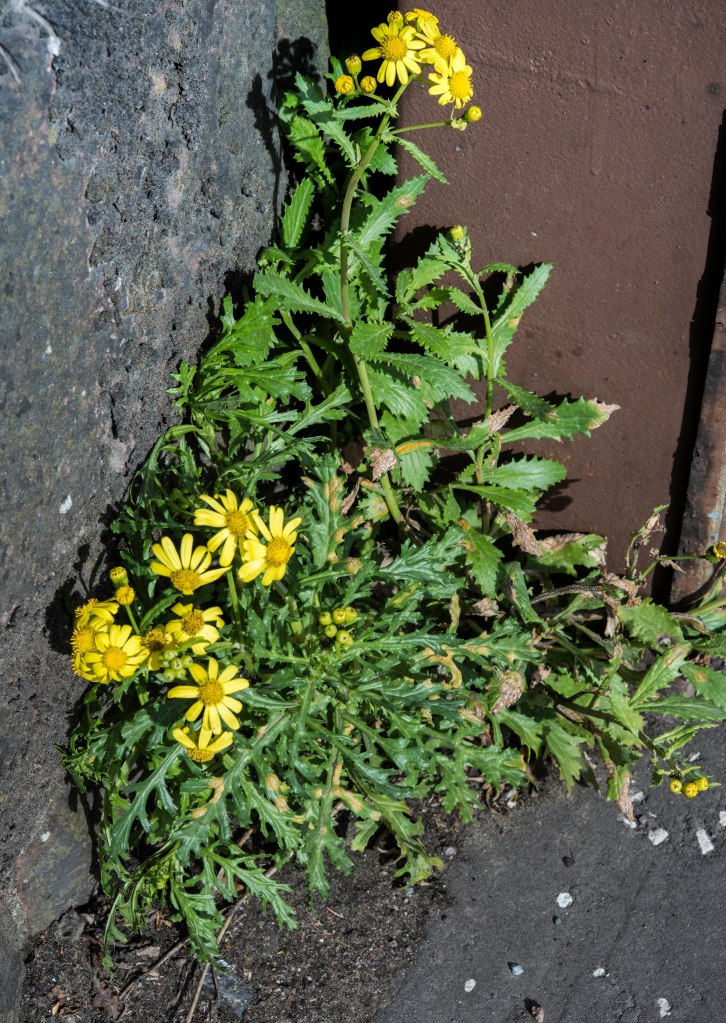
Senecio squalidus is a member of the Asteraceae (Compositae) – the same family as dandelions and daisies. You can watch a short video on how to identify the Asteraceae below.
S. squalidus is widespread in England, but in Scotland is mainly to be found around Glasgow and Edinburgh and some coastal areas. You can see its distribution map on the BSBI’s website here. If you select different time series on the map legend, you can see how the species has spread.
S. squalidus is described in Stace’s New Flora of the British Isles as a ‘neonative’, which means that it has arisen here as the result of natural (not man-made) hybridisation between a native and an alien species, or between two alien species. Its origins lie in the introduction of plant material from Sicily in the 1700s, when samples of plants were collected from a hybrid zone between two other Senecio species, S. chrysanthemifolius and S. aethnensis on Mount Etna and sent to England. Harris (2002) provides much detail about the possible routes and sources of the introduction.
This ragwort escaped from the Oxford Botanic Garden in the early 18th century and found a home from home in the stone walls of old Oxford buildings, thus giving rise to the name ‘Oxford ragwort’. It then spread, and is still spreading, through the rail and road networks, where ballast simulates volcanic surfaces. Richard Abbott and colleagues at St Andrew’s reported in 2000 that it became established in the Central Belt of Scotland in the mid 1950’s and has been spreading northwards to Fife and beyond since then. Their studies of the form and molecular variation in British S. squalidus plants and their probable Sicilian parents support the view that S. squalidus arose in cultivation in Britain from Sicilian hybrids. The modern descendants of this introduction are very variable in appearance – leaf shape can vary from shallowly serrate to almost double pinnate often within a single population, indicating the hybrid origin of this species (Stace, 2019). In Britain S. squalidus now hybridises with several other Senecio species, including our native groundsel (S. vulgaris) and sticky groundsel (S. viscosus).

Reflecting its volcanic origins, it is commonly found in dry cracks and crevices, on pavements, derelict ground and old walls. Its flowers with yellow ray florets are a cheerful sight in many urban places.

References
Abbott, RJ, James, JK, Irwin, JA, Comes, HP. (2000) Hybrid origin of the Oxford Ragwort, Senecio squalidus L. Watsonia 23: 123-138. (http://archive.bsbi.org.uk/Wats23p123.pdf)
Harris, SA. (2002) Introduction of Oxford ragwort, Senecio squalidus L. (Asteraceae), to the United Kingdom. Watsonia 24: 31–43. (http://archive.bsbi.org.uk/Wats24p31.pdf)
Stace, C. (2019). New Flora of the British Isles. Fourth edition. C&M Floristics, UK.
2 thoughts on “Plant of the week – 24 May 2020 – Oxford Ragwort”